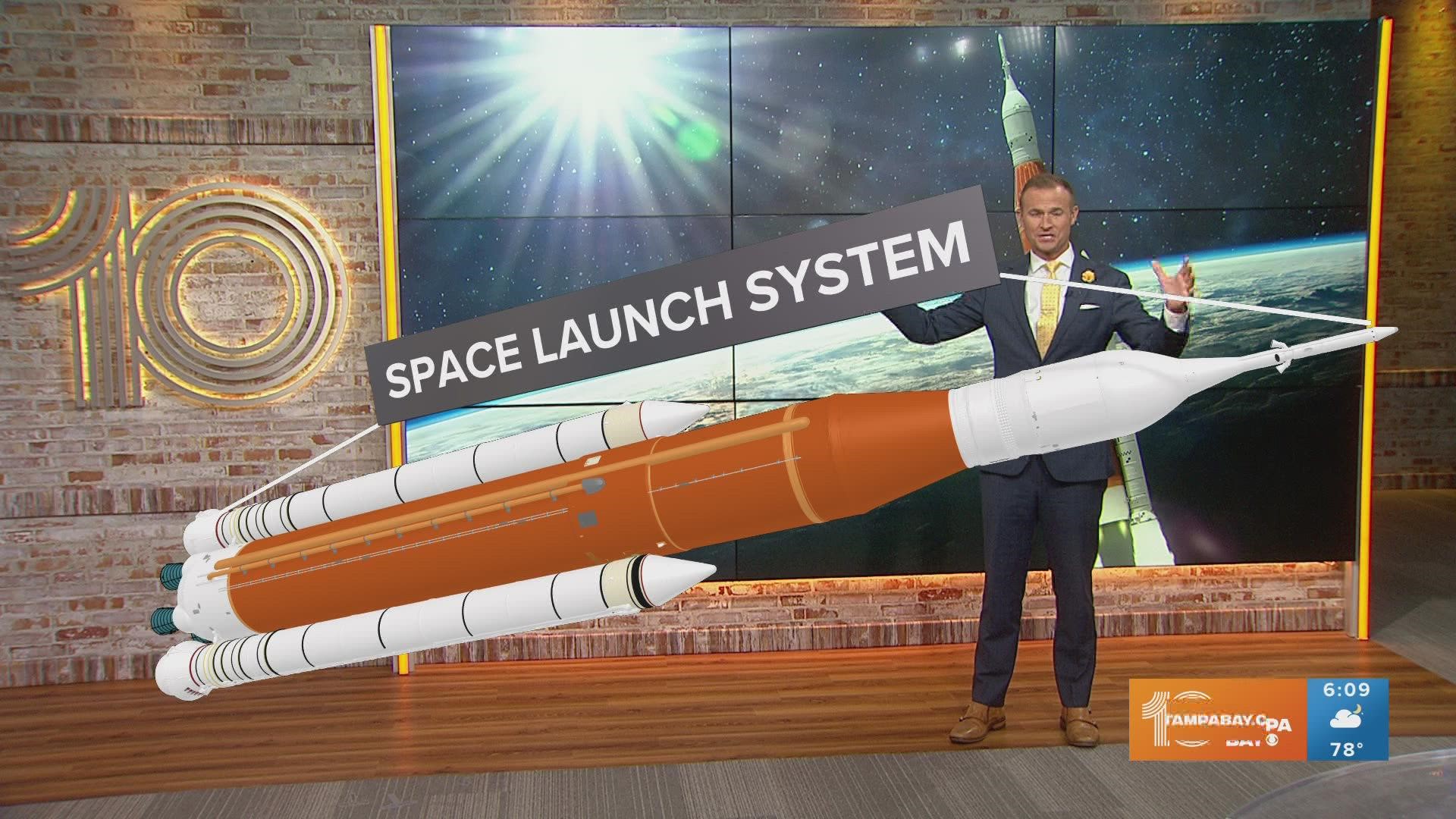CAPE CANAVERAL, Fla. — Following reports of fuel leaks and an engine bleed, a successful on-time launch of NASA's highly anticipated Artemis I moon rocket Monday morning was put in jeopardy. Now, it's official — scrubbed.
A scrub means officials are choosing not to launch as originally planned and will come back and try again another time. NASA originally set a two-hour window in which Artemis can lift off, beginning at 8:33 a.m. and running through 10:33 a.m. Eastern time.
NASA called the scrub just minutes into the launch window after troubleshooting attempts of an engine bleed failed with engine No. 3.
The next possible opportunity to blast off is not until Friday.
Crews repeatedly stopped and started fueling the Space Launch System rocket with about 1 million gallons of hydrogen and oxygen because of a leak, according to The Associated Press. Thunderstorms near Kennedy Space Center already delayed the process by roughly an hour.
Another leak was reported in a valve that officials thought was fixed in June.
Later, NASA officials said a crack or some defect was found on the core stage — the large orange fuel tank with four main engines on board — with frost appearing, the AP reported. They later learned it was just that, a buildup of frost.
"We have a lot of work to get to that point," NASA’s assistant launch director, Jeremy Graeber, told the outlet referring to an on-time launch.
This is a developing story. Check back for updates.
RELATED: Snoopy's going to the Moon, kind of
RELATED: Snoopy's going to the Moon, kind of
The Artemis I mission is the first integrated test of NASA's deep space exploration systems.
It's a mission that "will provide a foundation for human deep space exploration and demonstrate our commitment and capability to return humans to the Moon and extend beyond," NASA's site reads.
While no humans will be aboard this first launch, the Artemis I mission will "set the stage for human exploration into deep space" as the performance of both Orion and SLS will test capabilities of orbiting the Moon and returning to Earth.
The Orion spacecraft will launch atop the most powerful rocket in the world, reaching a distance farther than any spacecraft built for humans has ever reached before. It will travel 280,000 miles from Earth and 40,000 miles beyond the far side of the moon. It will then stay in space longer than any human spacecraft has without docking to a space station.
While in space, parts of the space exploration system will deploy ten small satellites to study the moon and reach farther deep space destinations.
The final test of the mission will be whether Orion can return safely to Earth. Traveling at 25,000 mph, Orion will enter Earth's atmosphere. It will then slow to 300 mph but will produce temperatures of about 5,000 degrees. If it can pass the speed and extreme heating phase of the flight it will descend into the Pacific ocean where a landing and recovery team will work to safely recover it.
10 Tampa Bay's Lucille Lannigan contributed to this report.

